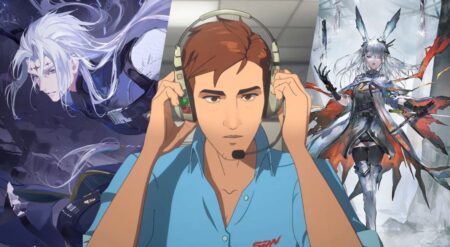The exploration of trauma isn’t new to horror as a genre. In fact it’s a driving force of much of the horror media we consume and love. Throughout the genre, we’ve seen our favorite characters endure so much trauma that they’ll need therapy for years to come. And we’ve seen depictions of all sorts of trauma, like grief-based trauma in The Descent (2005), generational trauma in Hereditary (2018), racial trauma in the television adaptation of Lovecraft Country, and more. The film I’m here to talk about, though, is Halloween II (2009) and how the director’s cut approaches trauma.
Rob Zombie’s take on Halloween is controversial and often sparks discourse amongst horror fans. Depicting Michael Myers as anything more than the Boogeyman or a man controlled by a mysterious cult is a big no-no for some fans. And the discourse Zombie’s Halloween (2007) remake made people shake their fists because he gave Michael a backstory. Therefore the discourse surrounding the sequel, Halloween II (2009) is incredibly strong. More specifically, it was due to the creative direction Zombie took with it. However, Halloween II (2009)’s director’s cut is quite different in comparison to the theatrical version.
In the director’s cut, Halloween II follows Laurie (Scout Taylor-Compton) two years after Michael (Tyler Mane) went on a killing spree and nearly killed her, Annie (Danielle Harris), and Dr. Loomis (Malcolm McDowell) in the previous film. And just like Laurie feared, Michael returns to terrorize Haddonfield once more. Only the killing spree this time around is paired with hallucinations and a lot of visuals that depict Laurie’s deteriorating mental health because of the events two years ago.

The grit and gore throughout Halloween II (2009) might not be for everyone (with some scenes being strictly for shock). But all of it totally captures what’s going on inside Laurie. After enduring the hell of the first film, where she lost her adoptive parents and friends, nearly lost Annie, witnessed a lot of violence, and nearly died herself, there’s no questioning why she might not be okay. Not to mention the psychic connection between Michael and Laurie, proving they are still connected (something that becomes even more important in the third act).
In the director’s cut Laurie might be viewed as unlikable because her behavior isn’t watered down. She is visibly dealing with PTSD and overall mental health issues from start to finish. And, of course, Annie is also incredibly traumatized, even going so far as becoming a recluse who stays at home.
Their relationship (which can be read as queer-coded if you squint) is incredibly fractured as a result of the trauma, with Laurie even stating to her therapist that Annie is a physical reminder of what happened. It’s an accurate portrayal of how trauma can affect people’s lives and relationships. Rather than show people acting “normal” after a killing spree and near-death experiences, these characters aren’t remotely okay.
Throughout the director’s cut, Annie and Laurie fight quite a bit. And the last time they see each other is when Annie is dying. As heartbreaking and gruesome as Annie’s death is, it symbolizes the last shred of hope and light that Laurie has in her life. She has very little left to hold onto as soon as Annie dies. And despite Annie being a physical reminder of what happened two years ago, Laurie never wanted to lose her. She even goes so far as to say ”Don’t leave me, baby”. Laurie is visibly wracked with grief and goes directly into fight or flight when Michael comes after her again.
Touching on trauma in a way that isn’t that easy to swallow or cookie cutter and is more gnarly and messy isn’t always an easy watch. But it’s more realistic in a film that steps outside the realms of reality. Slashers don’t always care about showing how people would act. And there’s nothing wrong with slashers that are more about having fun. However, it’s refreshing to see a final girl incredibly affected and traumatized. It’s raw and real and shouldn’t be dismissed as strictly annoying when it only adds to the film.
The end of the director’s cut of Halloween II isn’t remotely happy and is potentially unsatisfying as everyone linked to Michael’s past, including Michael himself, dies. Laurie’s life was an emotional hell for two years. She endured another killing spree, and then she met her demise in the final minutes of the film. Not everyone can be who they used to be after trauma, and I think that’s a very bold ending to give your final girl. This isn’t the Laurie Strode in the H40 trilogy who is able to vanquish Michael. It shows another side to things, and that, to me, is effective, even if it sounds too miserable to watch.







